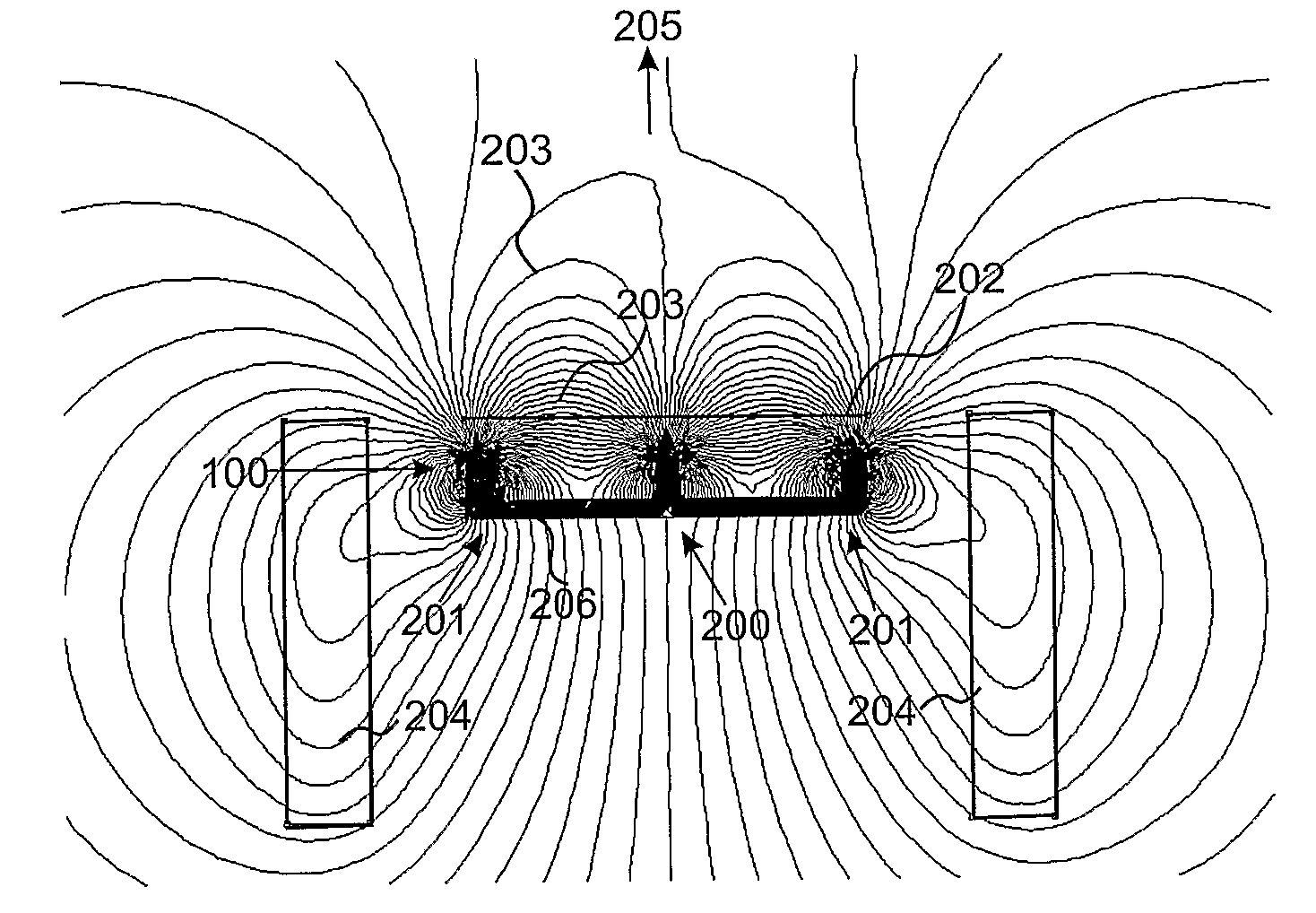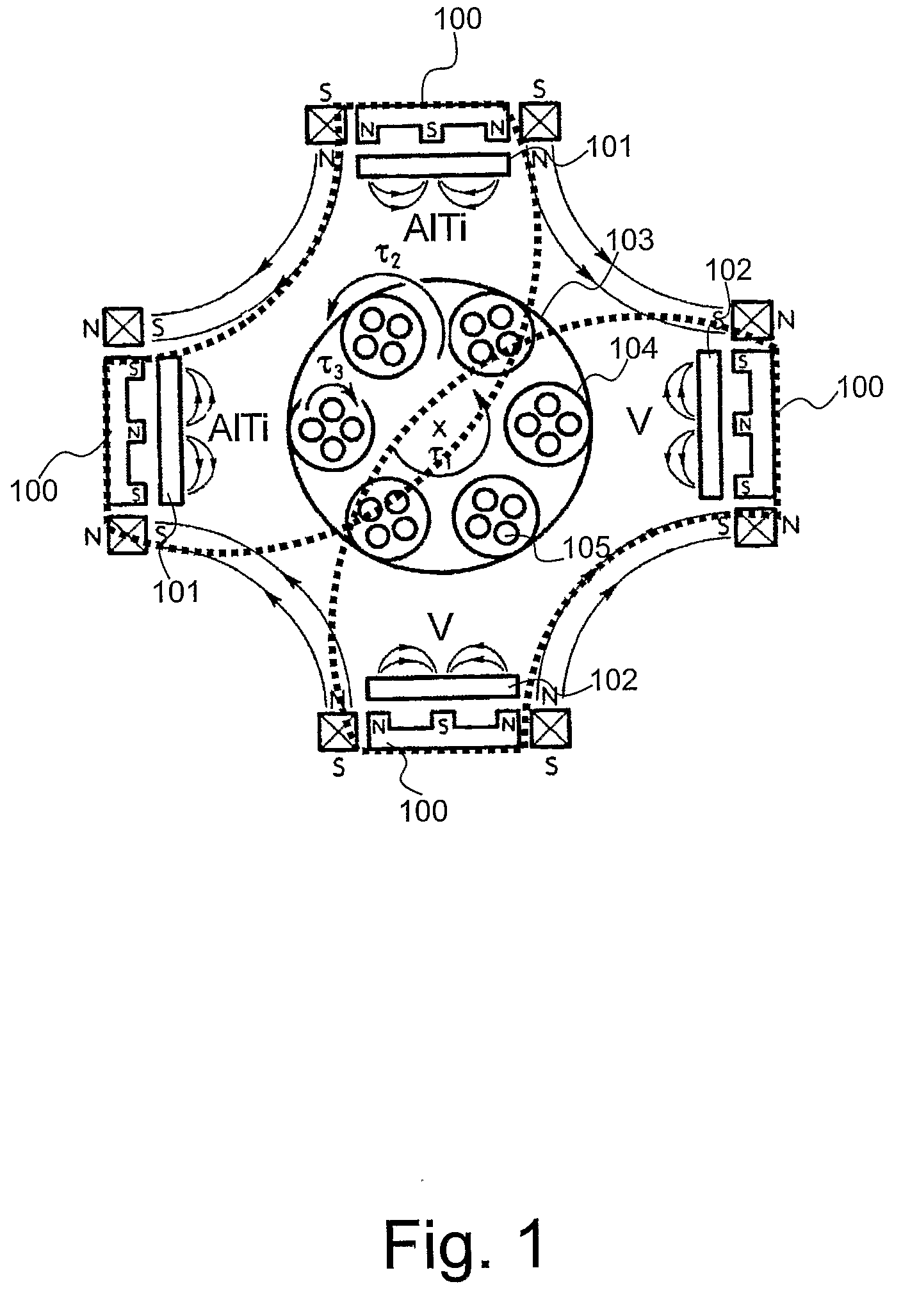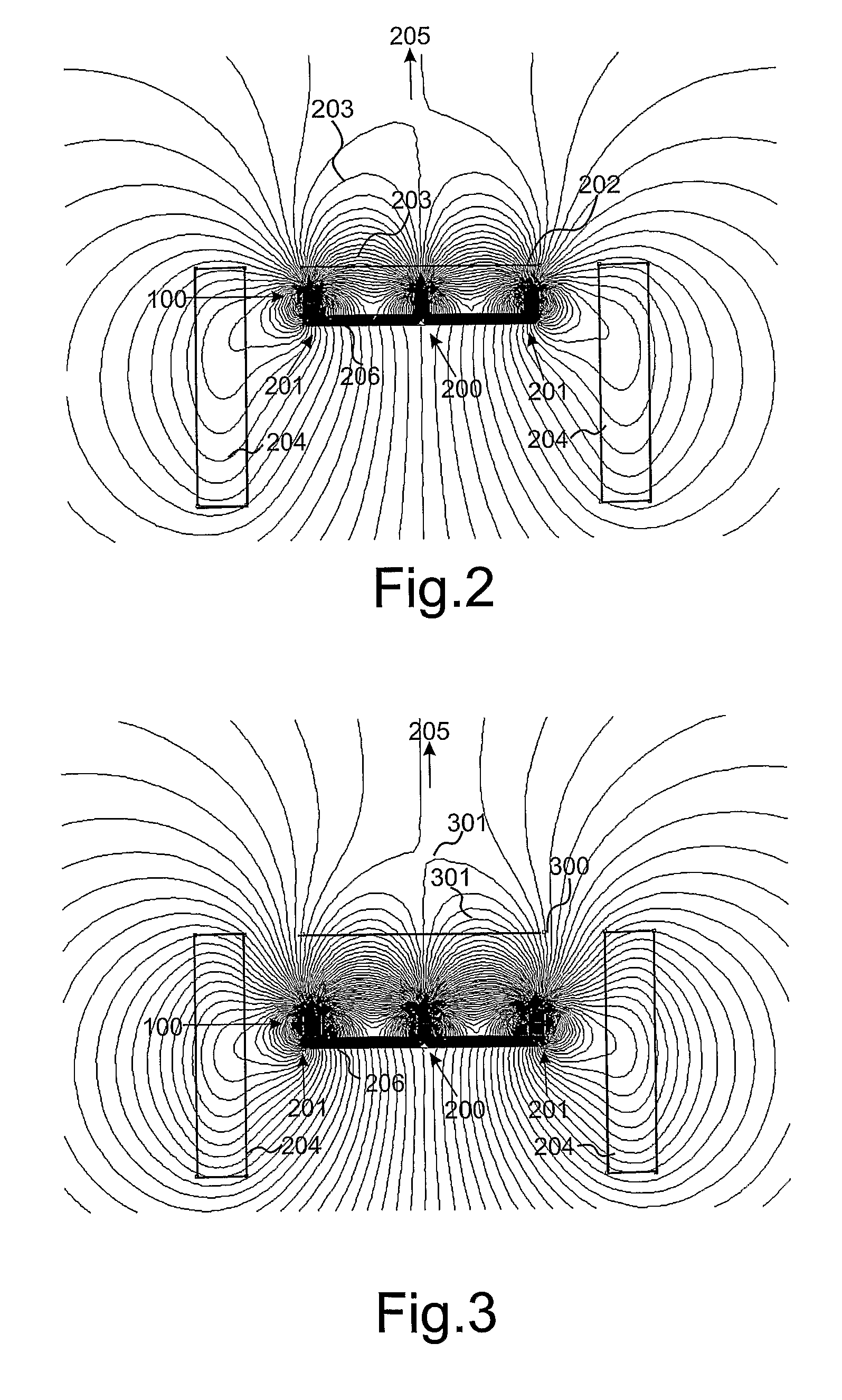High power impulse magnetron sputtering vapour deposition
a magnetron sputtering and high-power technology, applied in the direction of electrodes, diaphragms, ion implantation coatings, etc., can solve the problems of low target utilisation, low ion flux in the vicinity of the substrate, and limited maximum average target power density, so as to reduce plasma losses, reduce the time taken, and limit the effect of deposition ions
- Summary
- Abstract
- Description
- Claims
- Application Information
AI Technical Summary
Benefits of technology
Problems solved by technology
Method used
Image
Examples
Embodiment Construction
[0036]There will now be described by way of example a specific mode contemplated by the inventors. In the following description numerous specific details are set forth in order to provide a thorough understanding. It will be apparent however, to one skilled in the art, that the present invention may be practiced without limitation to these specific details. In other instances, well known methods and structures have not been described in detail so as not to unnecessarily obscure the description.
[0037]An investigation was undertaken to determine the influence of magnetic field strength in the proximity of the target on the deposition rate of metal ions deposited via a HIPIMS process.
[0038]Although magnetron systems are designed to influence only the electrons, metal ions are also confined indirectly via an ambipolar interaction with electrons. This interaction forces both species to exist in equilibrium in order to sustain quasineutrality which is a fundamental property of the plasma....
PUM
| Property | Measurement | Unit |
|---|---|---|
| magnetic field | aaaaa | aaaaa |
| discharge current density | aaaaa | aaaaa |
| discharge current density | aaaaa | aaaaa |
Abstract
Description
Claims
Application Information
 Login to View More
Login to View More - R&D
- Intellectual Property
- Life Sciences
- Materials
- Tech Scout
- Unparalleled Data Quality
- Higher Quality Content
- 60% Fewer Hallucinations
Browse by: Latest US Patents, China's latest patents, Technical Efficacy Thesaurus, Application Domain, Technology Topic, Popular Technical Reports.
© 2025 PatSnap. All rights reserved.Legal|Privacy policy|Modern Slavery Act Transparency Statement|Sitemap|About US| Contact US: help@patsnap.com



